In the morning, we took a taxi to the Ho Chi Minh mausoleum.
Ho Chi Minh was born as Nguyen Sinh Cung in 1890 in central Vietnam, which was then part of French Indochina. He worked on a French steamer and spent several years at sea traveling. While living in France, he petitioned that the French colonial government in Indochina give its Vietnamese subjects equal rights. Inspired by Vladimir Lenin’s Bolshevik Revolution, he joined the Communist Party and traveled to Moscow. He began recruiting members for a Vietnamese nationalist movement.
When Germany defeated France in 1940 during World War II, he changed his name to Ho Chi Minh (Bringer of Light) and returned to Vietnam to organize the Viet Minh (League for the Independence of Vietnam). With the Allied victory in 1945, the Viet Minh seized Hanoi. Ho became president of the Democratic State of Vietnam (or North Vietnam). The French held on to southern Vietnam. Despite Ho’s best efforts to maintain peace, war broke out. The French lost the First Indochina War (1945 - 1954). Agreements were set up... but were broken.
In 1955, the Second Indochina War (also called the Vietnam War in the West or the American War in Vietnam) then began. Communist guerrillas known as the Viet Cong (National Liberation Front) began attacking South Vietnam. They asked North Vietnam for help, while the United States joined to support the anti-Communist regime of South Vietnam. American air strikes began in 1965. The conflict was still raging when Ho Chi Minh died in 1969. In 1973, the last U.S. troops left Vietnam, and in 1975 Communist forces seized Saigon, renaming it Ho Chi Minh City.
"Uncle Ho" became the symbol of the country's struggle for unification.
Outside the large mausoleum, long lines of people waited to pay tribute to the embalmed remains of the man himself. We checked any bags and cameras and went through security. We shuffled along in a long line of people, up the stairs into the mausoleum. Numerous guards stood about in clean, white outfits. There were lots of rules such as no hands in your pockets, no jesting, etc. Two old men ahead of us seemed super excited. They had taken their hats off and were holding hands. We were ushered quickly past the large coffin. It had glass sides and was lit with a spotlight inside. The body was very easy to see.... a very real-looking old man.
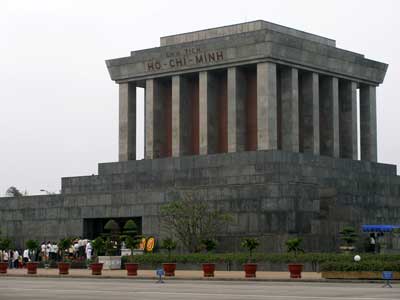
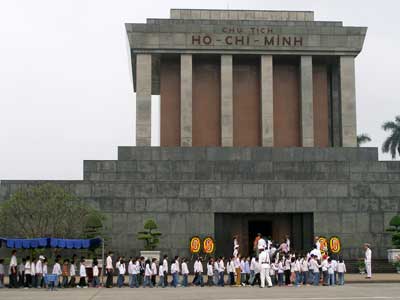
Upon exiting, we followed the crowds to a park. We were pulled aside, however, and told to pay 5,000 dong. When we asked why, were were informed it was to be able to walk around Ho Chi Minh's stilt house and garden... even through it was free for everybody else.
It wasn't a lot of money (only about 30 US cents) but we didn't like the unfairness of it. So we left and went to the museum instead.
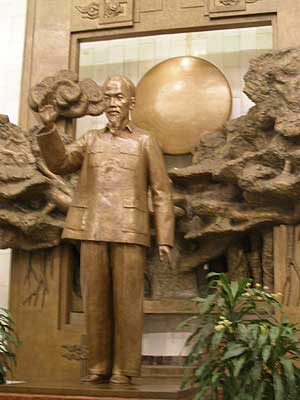
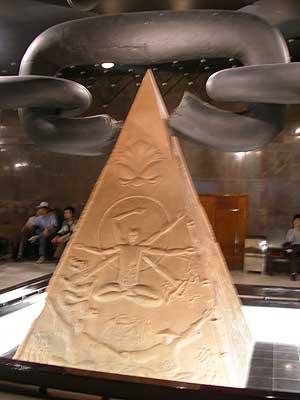
We caught a taxi to the Temple of Literature (Van Mieu), built in 1070. It was also the home of the first national university or imperial academy, started in 1076.
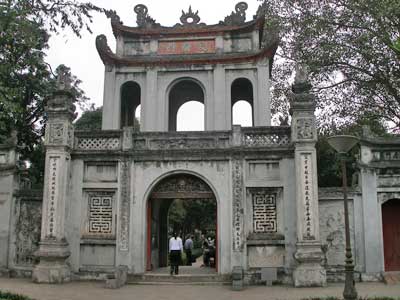
The main gate

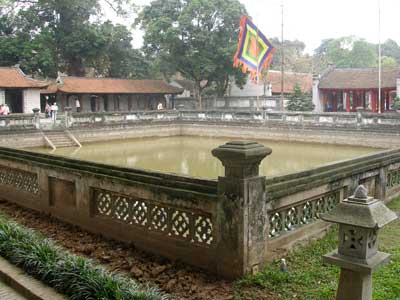
Lots of green .... and Thien Quang well
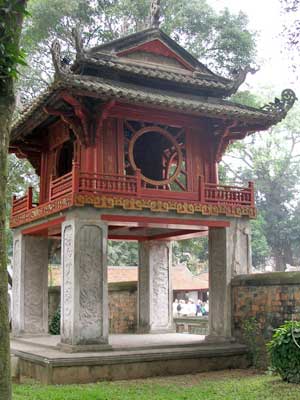
The Khue Van pavillion
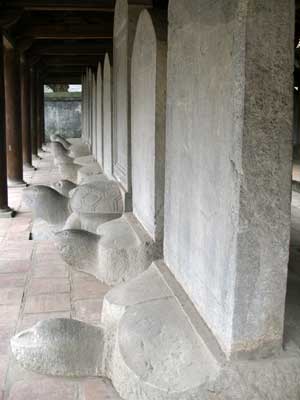
116 turtles support large slabs carved with the names of 1,307 students who successfully passed the royal exams between 1442 and 1779.
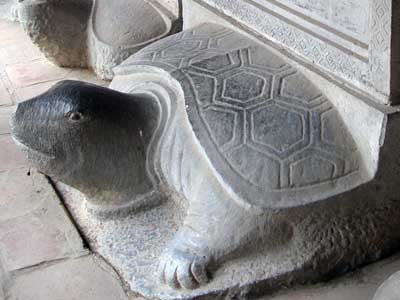
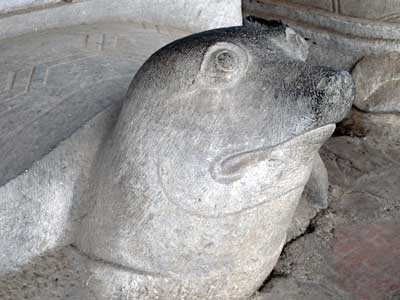
The turtle is one of the nation's four holy creatures, along with the dragon, unicorn and phoenix. It is a symbol of longevity and wisdom. The style of each turtle changed over time.
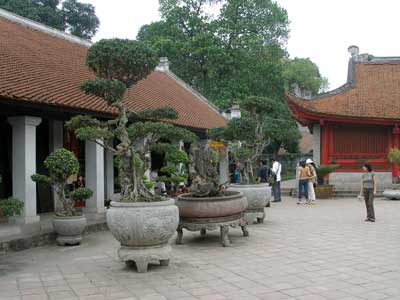
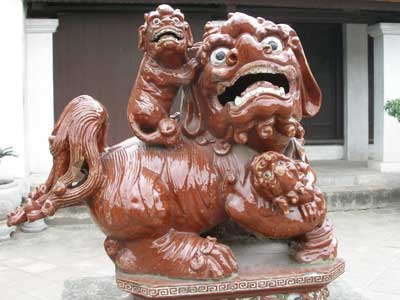
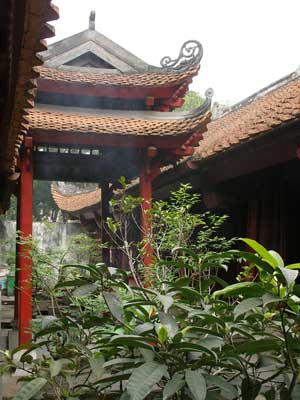

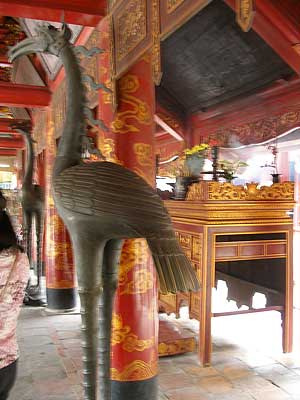
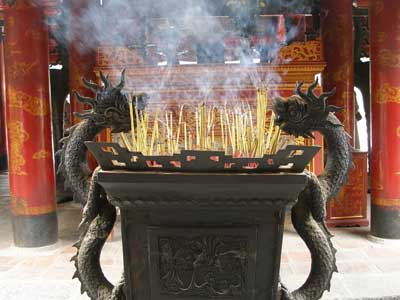
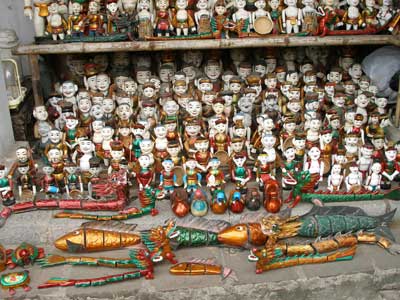
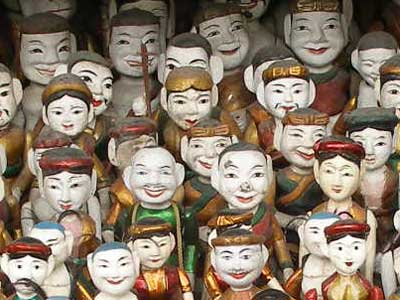
A collection of water puppets
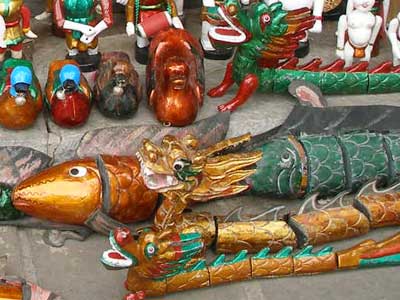

We walked to a nearby park, dominated by a huge statue of Lenin.
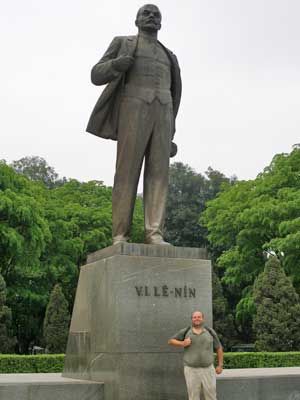
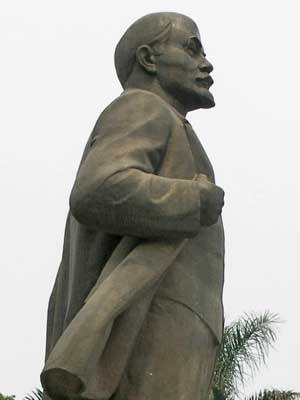
We grabbed some lunch back at the hotel then set out again.
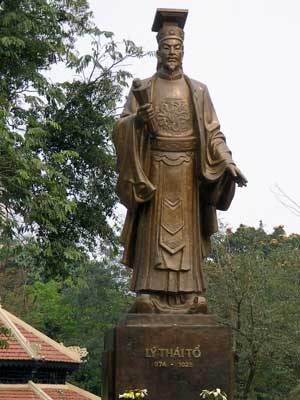
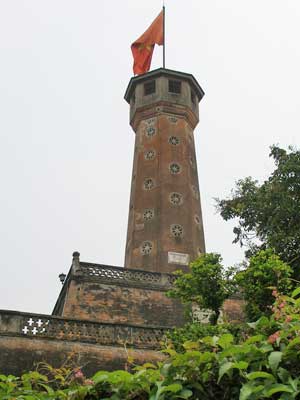
Ly Thai To (974 - 1028), founder of the Later Ly Dynasty ... and the old flag tower (built in 1812) as part of an imperial citadel.
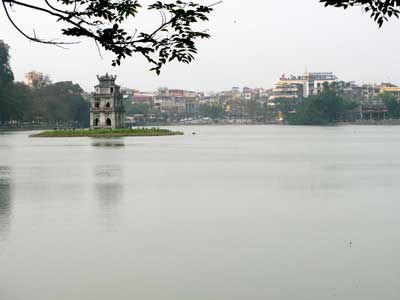

Hoan Kiem Lake and the small Tortoise Tower
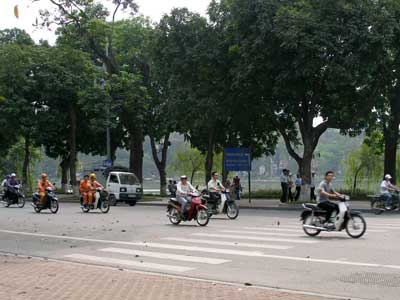

Crossing the street was always an interesting challenge. You simply had to step out and keep walking at a consistent pace, so that motorbikes flying by could calculate where you'd be and swerve around you. If you stopped mid-way, the whole system would be thrown off. I wasn't up for doing this with cars and busses though.
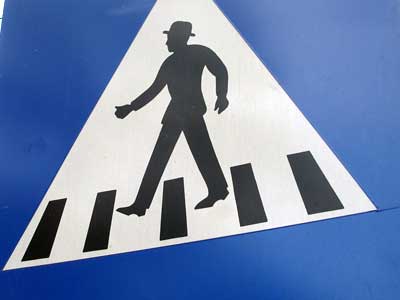
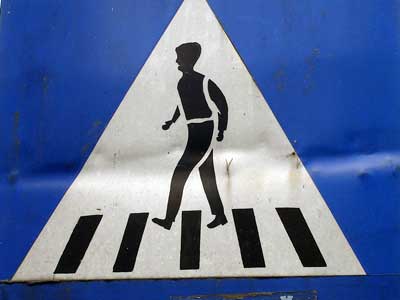
The pedestrian crossings signs were all different. Some had hats (in a variety of different styles), some had shoes and hands, others were more blobby.
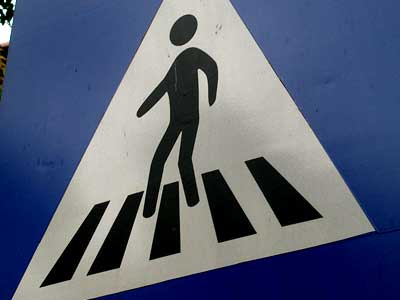
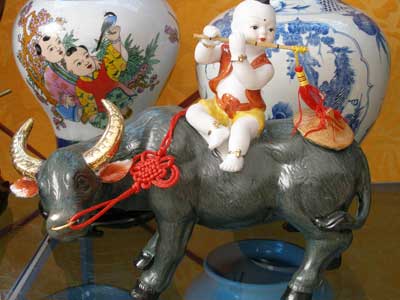
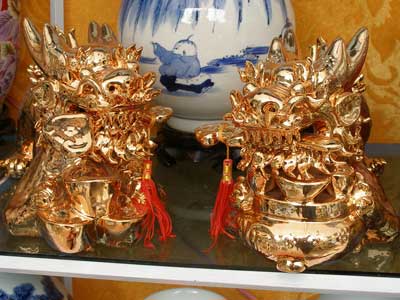
Store items
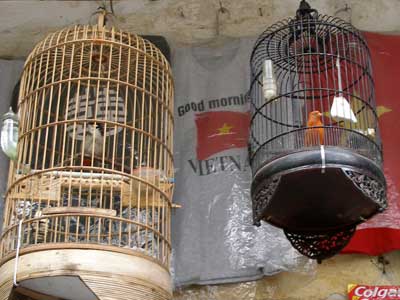
Caged birds for luck (although not quite so lucky for the bird though)
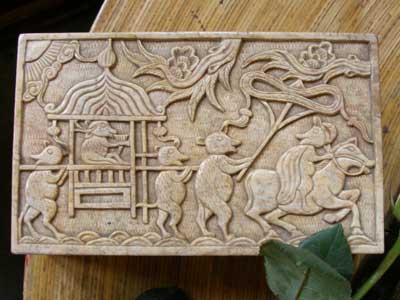
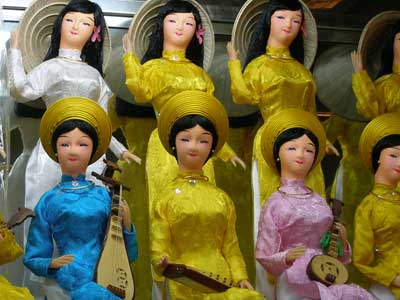
return • continue

